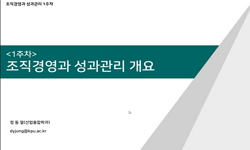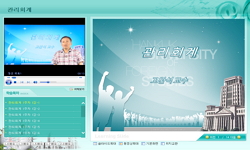본 연구는 2004년 중소기업청이 창업분야 전문인력 양성을 목적으로 전국 5개권역에 창업대학원을 설립한 후 창업대학원의 기술창업교육 운영의 내실화를 도모하고 자율경쟁을 유도하기 위...
http://chineseinput.net/에서 pinyin(병음)방식으로 중국어를 변환할 수 있습니다.
변환된 중국어를 복사하여 사용하시면 됩니다.
- 中文 을 입력하시려면 zhongwen을 입력하시고 space를누르시면됩니다.
- 北京 을 입력하시려면 beijing을 입력하시고 space를 누르시면 됩니다.

BSC(Balanced Scorecard) 기반의 기술창업교육 성과평가모형 개발 연구 - 창업대학원 성과평가지표 분석과 개선방안도출을 중심으로 - = A study for Developing Performance Assessment Model of Technology Entrepreneurship Education Based on BSC - A Case Study to Graduate School of Entrepreneurial Management -
한글로보기https://www.riss.kr/link?id=A101195101
-
저자
양영석 (한밭대학교) ; Yang, Young Seok

- 발행기관
- 학술지명
- 권호사항
-
발행연도
2013
-
작성언어
Korean
- 주제어
-
등재정보
KCI등재
-
자료형태
학술저널
-
수록면
129-139(11쪽)
-
KCI 피인용횟수
3
- DOI식별코드
- 제공처
-
0
상세조회 -
0
다운로드
부가정보
국문 초록 (Abstract)
본 연구는 2004년 중소기업청이 창업분야 전문인력 양성을 목적으로 전국 5개권역에 창업대학원을 설립한 후 창업대학원의 기술창업교육 운영의 내실화를 도모하고 자율경쟁을 유도하기 위해 연차별로 그 성과평가를 해오고 있는 상황에 대해 BSC(Balanced Score Card) 기법을 이용해 그 평가방법의 타당성을 평가하고 개선방안을 제시하는 것이 목적이다. 이를 통해 본 논문은 중소기업청의 창업대학원지원사업의 성과평과와 관리의 타당성을 평가하고 정책적 보완점을 도출하고자 하였다. 본 연구는 크게 두 가지의 연구를 수행하였다. 첫째, 창업교육이라는 공공서비스를 제공하는 비영리기관인 창업대학원의 성과평가에 BSC 기법을 도입하는 방안을 기존문헌연구를 통해 제시하였다. 둘째, 중소기업청이 제시하고 있는 창업대학원 평가체계를 BSC적 관점에서 평가하여 평가체계의 타당성을 분석하고 합리성 제고를 위한 개선방안을 도출하였다. 연구결과, 첫째, 창업대학원의 성과평가는 평가에 그치며 차기 성과관리에 큰 기여를 하지 못하는 시스템을 가지고 있다. 둘째, 창업대학원의 성과평가가 정부의 직접적인 정책적 목표 달성 이외에는 큰 성과제고 환경을 구축하지 못하고 있다. 셋째, 창업대학원의 성과평가는 투입재무와 하드웨어적인 요소만 강조할 뿐 창업대학원의 자립적 성장에 큰 기여를 하는 인적자원확보와 정부정책 및 제도 활용 자원의 투입은 부재하였다. 넷째, 창업대학원의 정책목표 자체가 창업자 일변 중심이었다. 다섯째, 창업대학원이 지속적으로 그리고 자립적으로 성장하기 위해서는 학습 및 성장 관점에 대한 전략과 평가지표 수립이 미흡하였다. 본 논문은 최근 정부가 막대한 정부예산을 대학에 투입하여 창업교육을 통한 기업가정신 함양에 정책적 노력을 기울이고 있는 상황에서 정부의 창업교육정책이 표방하는 목표와 이를 수용하는 대학의 수용체계가 적절히 균형을 이루어가고 있는지를 평가하는 새로운 평가토대를 마련해 주는 의의가 있다. 그러나, 본 논문에는 중소기업청의 창업대학원 성과평가에 BSC 모형의 평가지표에 대해 설문조사등의 실증적 연구는 포함되지 않아 연구의 한계를 가지고 있으며 추후연구과제로 남아있다.
다국어 초록 (Multilingual Abstract)
This paper is targeted on proposing ameliorating alternative to performance assessment method of GSEM through evaluating the current one, which is initiated by SMBA to induce fair competition among 5 GSEM across the country and accommodate the quality...
This paper is targeted on proposing ameliorating alternative to performance assessment method of GSEM through evaluating the current one, which is initiated by SMBA to induce fair competition among 5 GSEM across the country and accommodate the quality improvement of entrepreneurship education since 2005 after beginning the SMBA support, from the perspective of BSC(Balanced Scorecard) tool. Ultimately, it complements the policy defects of SMBA over GSEM, in particular, in the process of performance assessment and management. This paper carries out two studies as follow. First, throughout reviewing the previous studies relating to BSC applications to non-profit organization, it set out the direction of introducing BSC in assessing performance of GSEM in order to enhance its effectiveness. Second, it evaluate the rationality of performance assessing tools apllied to GSEM by SMBA on the basis of BSC application over non-profit organization, especially in education institution. Research results shows the following implications. First, the current evaluation system over GSEM is just merely assessment itself and not much contributions for the post performance management. Second, The annual evaluation just remains to check up whether the policy goals are met or not. Third, the current evaluation puts much emphasis just on financial inputs and hardware infra, not considering human resources and utilization of government policy and institution. Fourth, the policy goals are unilaterally focused on entrepreneurs. Fifth, the current evaluation systems do not contain any indexes relating to learning and growth perspectives for concerning sustainable and independent growing up. However, lack of empirical testing require this paper to need the further study in the future.
참고문헌 (Reference)
1 Yun, S. J., "Utilizing Plan of BSC Model in Assessing Government Performance Evaluation system" Korean Adminstration Research Institute 2005
2 Kaplan, R. S., "Using the Balanced Scorecard as a Strategic Management System" 74 : 75-85, 1996
3 Kaplan, R. S., "Transforming the Balanced Scorecard from Performance measurement to Strategic Management" 15 (15): 87-104, 2001
4 Kaplan, R. S., "The Balanced Scorecard: Measures that drive Performance" 70 : 71-79, 1992
5 Kang, S. G., "Role Analysis of Company Competency Factors in the process of applying BSC : Case Study of ‘S’company" 16 (16): 77-102, 2011
6 Kim, H. K., "Practical BSC Manual, Seoul Metropolitan City" Sigmainsite.com Corp 2001
7 Kim, J. M., "Performance and Current Status Assessment of GSEM in Korea" 6 (6): 101-124, 2009
8 Song, K. K., "Performance Driver-Olve, Ray, and Wetter" Galab and Company 2000
9 Cho, J. S., "Establishing Strategic Performance Management System by Utilizing BSC to the Department of College" Kyungbook National University 2009
10 Hwangbo, Y., "Development Direction and Performance Assessment through last 9 years in GSEM" Association of GSEM 2013
1 Yun, S. J., "Utilizing Plan of BSC Model in Assessing Government Performance Evaluation system" Korean Adminstration Research Institute 2005
2 Kaplan, R. S., "Using the Balanced Scorecard as a Strategic Management System" 74 : 75-85, 1996
3 Kaplan, R. S., "Transforming the Balanced Scorecard from Performance measurement to Strategic Management" 15 (15): 87-104, 2001
4 Kaplan, R. S., "The Balanced Scorecard: Measures that drive Performance" 70 : 71-79, 1992
5 Kang, S. G., "Role Analysis of Company Competency Factors in the process of applying BSC : Case Study of ‘S’company" 16 (16): 77-102, 2011
6 Kim, H. K., "Practical BSC Manual, Seoul Metropolitan City" Sigmainsite.com Corp 2001
7 Kim, J. M., "Performance and Current Status Assessment of GSEM in Korea" 6 (6): 101-124, 2009
8 Song, K. K., "Performance Driver-Olve, Ray, and Wetter" Galab and Company 2000
9 Cho, J. S., "Establishing Strategic Performance Management System by Utilizing BSC to the Department of College" Kyungbook National University 2009
10 Hwangbo, Y., "Development Direction and Performance Assessment through last 9 years in GSEM" Association of GSEM 2013
11 Seo, W. J., "Developing Reference Model of BSC to Higher Education Institute" 24 (24): 39-58, 2010
12 Busan National University, "BSC Manual in Busan National University"
13 SMBA Department of Entrepreneurship Promotion, "Assessment Plan to GSEM" SMBA 2012
14 Yun, S. H., "Analysis of Non-Financial Performance Index in the Department of Secretary" 19 (19): 5-27, 2010
15 Lee, J. Y., "A study of Rejuvenating Library Utilization by connecting School, Public, and University Library" Ministry of Education and Human Resource 2006
동일학술지(권/호) 다른 논문
-
프레이밍효과를 적용한 창업기업의 납세순응 - 적발률, 납세자 옹호성향, 위험선호성향을 중심으로
- 한국벤처창업학회
- 김문식
- 2013
- KCI등재
-
- 한국벤처창업학회
- 이재훈
- 2013
- KCI등재
-
농식품 분야의 공동창업을 통한 공유가치창출(CSV) 사례연구
- 한국벤처창업학회
- 이동민
- 2013
- KCI등재
-
특허 네트워크 분석을 통한 융합 기술 트렌드 분석: 한국.미국.유럽.일본의 특허데이터를 중심으로
- 한국벤처창업학회
- 백현미
- 2013
- KCI등재
분석정보
인용정보 인용지수 설명보기
학술지 이력
| 연월일 | 이력구분 | 이력상세 | 등재구분 |
|---|---|---|---|
| 2026 | 평가예정 | 재인증평가 신청대상 (재인증) | |
| 2020-01-01 | 평가 | 등재학술지 유지 (재인증) |  |
| 2017-01-01 | 평가 | 등재학술지 유지 (계속평가) |  |
| 2013-01-01 | 평가 | 등재학술지 선정 (등재후보2차) |  |
| 2012-01-01 | 평가 | 등재후보 1차 PASS (등재후보1차) |  |
| 2010-01-01 | 평가 | 등재후보학술지 선정 (신규평가) |  |
학술지 인용정보
| 기준연도 | WOS-KCI 통합IF(2년) | KCIF(2년) | KCIF(3년) |
|---|---|---|---|
| 2016 | 1.21 | 1.21 | 1.16 |
| KCIF(4년) | KCIF(5년) | 중심성지수(3년) | 즉시성지수 |
| 1.15 | 1.12 | 1.187 | 0.36 |




 ScienceON
ScienceON






